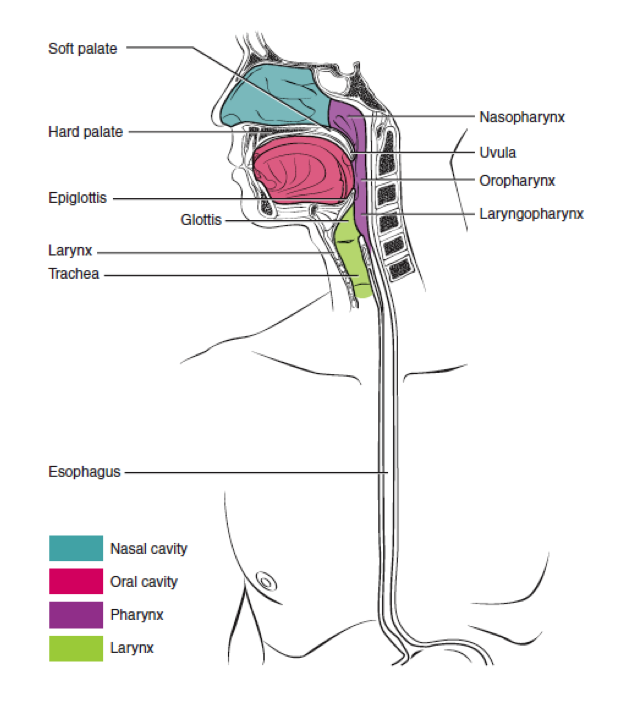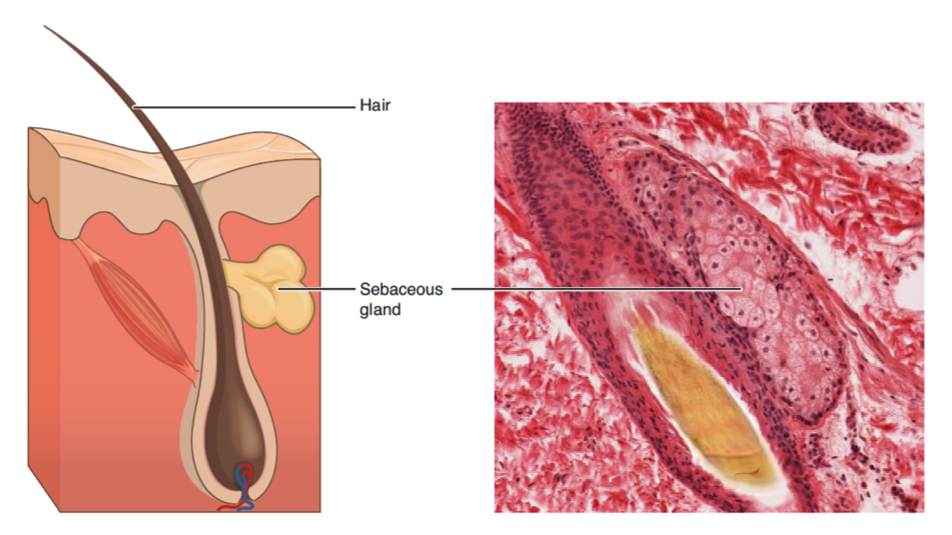Preface
Human Anatomy and Physiology I is designed for the first of two introductory human anatomy and physiology course offered at Douglas College. The textbook follows the scope and sequence of our own Human Anatomy and Physiology courses, and its coverage and organization were informed by the instructors who teach the course here at Douglas College.
About Douglas College
Douglas College is located in the province of British Columbia, Canada, hosting local, domestic, and international students. This textbook was adapted directly from the Human Anatomy & Physiology textbook originally created by OpenStax College to suit the needs of our own students and instructors, and will continue to be adapted and updated as those needs are recognized and change over time.
About Anatomy and Physiology I
Anatomy and Physiology I is designed for the first of two introductory human anatomy and physiology course offered at Douglas College. The text focuses on directly addressing the Course Objectives defined for BIOL 1103 and BIOL 1109 at Douglas College, covering the most important concepts and aiming to minimize distracting students with more minor details.
The development choices for this textbook were made with the guidance of hundreds of faculty who are deeply involved in teaching this course. These choices led to innovations in art, terminology, career orientation, practical applications, and multimedia-based learning, all with a goal of increasing relevance to students. We strove to make the discipline meaningful and memorable to students, so that they can draw from it a working knowledge that will enrich their future studies.
Cost
This textbook and its companion textbook Human Anatomy & Physiology II are available for free online, and in low-cost print editions from the Douglas College Bookstore.
Coverage and Scope
The units of our Human Anatomy and Physiology textbooks adhere to the scope and sequence followed by our courses at Douglas College.
Unit 1: Levels of Organization
Chapters 1–4 provide students with a basic understanding of human anatomy and physiology, including its language, the levels of organization, and the basics of chemistry and cell biology. These chapters provide a foundation for the further study of the body. They also focus particularly on how the body’s regions, important chemicals, and cells maintain homeostasis.
Chapter 1 An Introduction to the Human Body
Chapter 2 The Chemical Level of Organization
Chapter 3 The Cellular Level of Organization
Chapter 4 The Tissue Level of Organization
Unit 2: Support and Movement
In Chapters 5–11, students explore the skin, the largest organ of the body, and examine the body’s skeletal and muscular systems, following a traditional sequence of topics. This unit is the first to walk students through specific systems of the body, and as it does so, it maintains a focus on homeostasis as well as those diseases and conditions that can disrupt it.
Chapter 5 The Integumentary System
Chapter 6 Bone and Skeletal Tissue
Chapter 7 The Axial Skeleton
Chapter 8 The Appendicular Skeleton
Chapter 9 Joints
Chapter 10 Muscle Tissue
Chapter 11 The Muscular System
Unit 3: Regulation, Integration, and Control
Chapters 12–17 help students answer questions about nervous and endocrine system control and regulation. In a break with the traditional sequence of topics, the special senses are integrated into the chapter on the somatic nervous system. The chapter on the neurological examination offers students a unique approach to understanding nervous system function using five simple but powerful diagnostic tests.
Chapter 12 Introduction to the Nervous System
Chapter 13 The Anatomy of the Nervous System
Chapter 14 The Somatic Nervous System
Chapter 15 The Autonomic Nervous System
Chapter 16 The Neurological Exam
Chapter 17 The Endocrine System
Unit 4: Fluids and Transport
In Chapters 18–21, students examine the principal means of transport for materials needed to support the human body, regulate its internal environment, and provide protection.
Chapter 18 Blood
Chapter 19 The Cardiovascular System: The Heart
Chapter 20 The Cardiovascular System: Blood Vessels and Circulation
Chapter 21 The Lymphatic System and Immunity
Unit 5: Energy, Maintenance, and Environmental Exchange
In Chapters 22–26, students discover the interaction between body systems and the outside environment for the exchange of materials, the capture of energy, the release of waste, and the overall maintenance of the internal systems that regulate the exchange. The explanations and illustrations are particularly focused on how structure relates to function.
Chapter 22 The Respiratory System
Chapter 23 The Digestive System
Chapter 24 Nutrition and Metabolism
Chapter 25 The Urinary System
Chapter 26 Fluid, Electrolyte, and Acid–Base Balance
Unit 6: Human Development and the Continuity of Life
The closing chapters examine the male and female reproductive systems, describe the process of human development and the different stages of pregnancy, and end with a review of the mechanisms of inheritance.
Chapter 27 The Reproductive System
Chapter 28 Development and Genetic Inheritance
Pedagogical Foundation and Features
Anatomy and Physiology is designed to promote scientific literacy. Throughout the text, you will find features that engage the students by taking selected topics a step further.
- Homeostatic Imbalances discusses the effects and results of imbalances in the body.
- Disorders showcases a disorder that is relevant to the body system at hand. This feature may focus on a specific disorder, or a set of related disorders.
- Diseases showcases a disease that is relevant to the body system at hand.
- Aging explores the effect aging has on a body’s system and specific disorders that manifest over time.
- Career Connections presents information on the various careers often pursued by allied health students, such as medical technician, medical examiner, and neurophysiologist. Students are introduced to the educational requirements for and day-to-day responsibilities in these careers.
- Everyday Connections tie anatomical and physiological concepts to emerging issues and discuss these in terms of everyday life. Topics include “Anabolic Steroids” and “The Effect of Second-Hand Tobacco Smoke.”
- Interactive Links direct students to online exercises, simulations, animations, and videos to add a fuller context to core content and help improve understanding of the material. Many features include links to the University of Michigan’s interactive WebScopes, which allow students to zoom in on micrographs in the collection. These resources were vetted by reviewers and other subject matter experts to ensure that they are effective and accurate. We strongly urge students to explore these links, whether viewing a video or inputting data into a simulation, to gain the fullest experience and to learn how to search for information independently.
Dynamic, Learner-Centered Art
Our unique approach to visuals is designed to emphasize only the components most important in any given illustration. The art style is particularly aimed at focusing student learning through a powerful blend of traditional depictions and instructional innovations.
Much of the art in this book consists of black line illustrations. The strongest line is used to highlight the most important structures, and shading is used to show dimension and shape. Color is used sparingly to highlight and clarify the primary anatomical or functional point of the illustration. This technique is intended to draw students’ attention to the critical learning point in the illustration, without distraction from excessive gradients, shadows, and highlights. Full color is used when the structure or process requires it (for example, muscle diagrams and cardiovascular system illustrations).

Micrographs
Micrograph magnifications have been calculated based on the objective provided with the image. If a micrograph was recorded at 40×, and the image was magnified an additional 2×, the final magnification of the micrograph is indicated as 80×.
Please note that, when viewing the textbook electronically, the micrograph magnification provided in the text does not take into account the size and magnification of the screen on your electronic device. There may be some variation.

About Our Team
Senior Contributing Authors
| Jennifer M. Barker | Douglas College |
Contributing Authors
| Sarah McKinnon | Douglas College |
| Lois Schwarz | Douglas College |
Special Thanks
The authors wish to thank all those who provided vital resources without which production of this textbook would not have been possible. First, we wish to thank OpenStax College in general and more specifically all the contributors to the Anatomy & Physiology textbook from which the majority of this textbook was derived. We also wish to thank BCcampus for financial and technical support throughout the adaptation of this textbook. Finally, we wish to thank the Douglas College Research and Scholarly Fund Adjudication Committee and the Douglas College Vice President’s Academic Council for providing internal funding to allow the production and continued development of this work.

